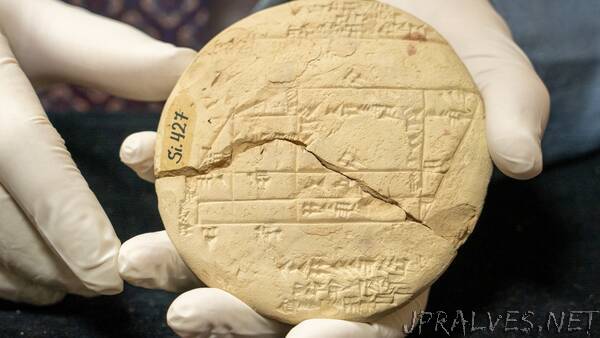
“A UNSW Sydney scientist has revealed that an ancient clay tablet could be the oldest and most complete example of applied geometry. The surveyor’s field plan from the Old Babylonian period shows that ancient mathematics was more advanced than previously thought.
A UNSW mathematician has revealed the origins of applied geometry on a 3700-year-old clay tablet that has been hiding in plain sight in a museum in Istanbul for over a century.
The tablet – known as Si.427 – was discovered in the late 19th century in what is now central Iraq, but its significance was unknown until the UNSW scientist’s detective work was revealed today.
Most excitingly, Si.427 is thought to be the oldest known example of applied geometry – and in the study released today in the Foundations of Science, the research also reveals a compelling human story of land surveying.
“Si.427 dates from the Old Babylonian (OB) period – 1900 to 1600 BCE,” says lead researcher Dr Daniel Mansfield from UNSW Science’s School of Mathematics and Statistics.
“It’s the only known example of a cadastral document from the OB period, which is a plan used by surveyors to define land boundaries. In this case, it tells us legal and geometric details about a field that’s split after some of it was sold off.”
This is a significant object because the surveyor uses what are now known as “Pythagorean triples” to make accurate right angles.
“The discovery and analysis of the tablet have important implications for the history of mathematics,” Dr Mansfield says. “For instance, this is over a thousand years before Pythagoras was born.””
